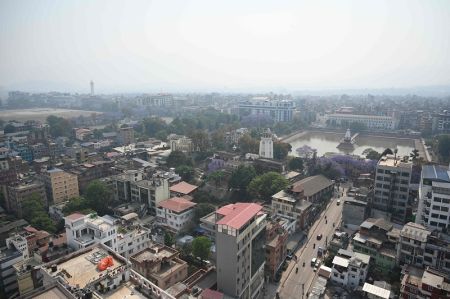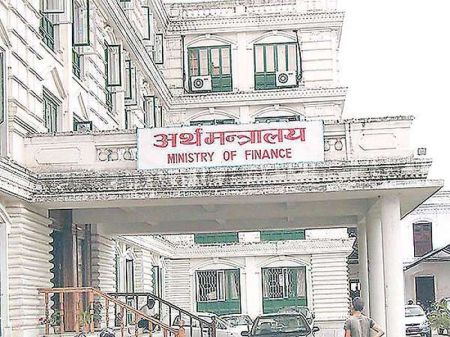--By TC Correspondent
Similar to the hundreds or perhaps thousands of grocery stores around town, there are cosmetic shops set up at every nook and corner of Kathmandu. From departmental stores to local beauty parlours, there is no dearth of cosmetic products for potential customers.
Cosmetics products are mainly imported from abroad. Nepal gets its cosmetics products of various brands from a number of different countries. Needless to say, like other imports, a significant share of cosmetics products available in Nepal are manufactured in India.
The market for cosmetics products has been growing quite significantly over the last few years. The availability of cosmetics products has increased appreciably and the consumption ratio too has increased with each passing year. The market boasts of leading cosmetics brands from the world. The domestic market for cosmetics products has come a long way as well with top notch global brands and established names from neighbouring countries available in the market.
Traders say that the market for cosmetics products in the country is growing at about 25-30 per cent. They attribute the rise in demand for cosmetics products to the growing middle class and awareness about personal image and hygiene, which has resulted in greater spending on beauty and personal care products. “The market for cosmetic products in Nepal is very good. It is showing continuous growth,” an importer said, adding that people have become fashion conscious and do not mind spending on cosmetic products. According to him, the sales of cosmetics product are good in the cities as well as small towns.
Brands Galore
The domestic market features products of around 80 cosmetics brands including international brands like Lakme, L’Oreal, Garnier and Emami as well as Mac’s Lavera, Nova, Chase, Astaberry, Lotus, Ayur, Ole and Aroma Magic. Products from third countries were the top sellers until a few years ago but that scenario has changed. Approximately, 80 per cent of the cosmetic products sold in Nepal currently are imported from India. Other countries that Nepal imports cosmetic products from include China, Singapore, Thailand, UAE and Europe.
“Nepali people are slowly understanding the importance of beauty and personal care products,” observed another trader. While cosmetic products used to be considered a luxury until a few years ago, they have turned into a necessity today.
Demanding Customers
Along with the growing market for cosmetic products, customer preference is changing drastically. People are demanding products as per their need in contrast to the past when customers used to simply buy products were available in the market. A lot of people are also moving from lesser priced products to premium ones.
The rise in awareness due to the media has forced traders to bring in products to satiate the need of choosy and demanding customers. A leading importer remarked, “The awareness level of customers has turned the market fiercely competitive.”
Though women still make up more than 80 per cent of the customers, the number of male customers is growing. The entry of products designed for men in recent years has helped the market grow significantly. Men’s products such as after shave, deodorant, perfume, hair gel and skin care items are popular among male customers.
Market Share
According to an estimate, medium range cosmetic products enjoy a market share of around 60 percent while the premium brands hold around 30 per cent share with the low-end segment garnering around 10 percent of the market.
Traders are now giving special attention to all kinds of markets in the country. “Around 60 per cent of the market for cosmetic products within the Kathmandu Valley,” a trader said. Besides Kathmandu, consumption of cosmetics products is high in places like Pokhara, Dharan, Itahari and Butwal. The gap in sales between Kathmandu and the rest of the country is narrowing so much so that the ratio can come down to 50-50 not too far in the future.
Driving Factors
Cosmetics are an addiction among Nepalis, commented a store supervisor at a leading cosmetics store. She said that around 10 to 12 new brands enter the market every month and still, all of them manage to survive. She attributes this to the influence of western lifestyles and persuasive television programmes and cinema that have helped to push up the sales figures of cosmetics products. Consumption of cosmetic products is high in the rural market as well with remittance playing a crucial role.
Customers living in small towns too have become more selective. People who used soaps for all purposes earlier are now shifting to products like shampoo and face wash. “An increase in the population in semi-urban and urban market places too has helped in the growth of sales for cosmetics products,” observed an industry insider.
A change in the mindset of people has led to increasing demand for cosmetic products among male customers. While males in urban areas started using cosmetic products quite some time ago, rural males have started to use them recently.
Challenges
The encouraging growth in sales and turnover aside, traders are not happy with the way things are. They say that inconsistency of rules and procedures at the customs had slowed the growth of the market. An importer complained that traders are forced to declare higher prices at the customs by the officials. He says that they are thus compelled to sell products at a higher price due to the high import duty.
Duplicate Products
With the plethora of products available in the market, complaints about duplicate products are also on the rise. Cosmetics products with similar labels and packaging has become a pertinent issue for all cosmetics users. The separation of duplicate products from original ones is almost impossible without proper government regulation.
It is hard to decide on the right one due to the availability of brands that claim to be original. However, one can avoid usage of unnecessary and harmful chemicals with long-term consequences on the health of one’s skin by taking precautions and advice from experts.






















